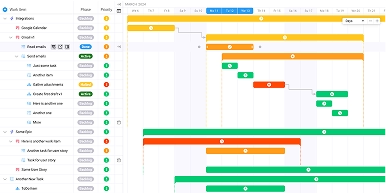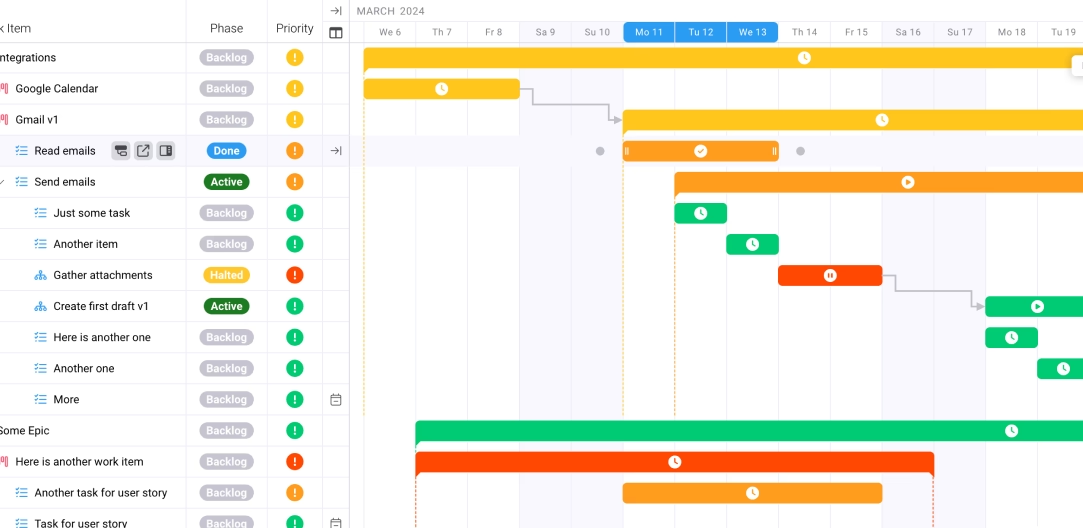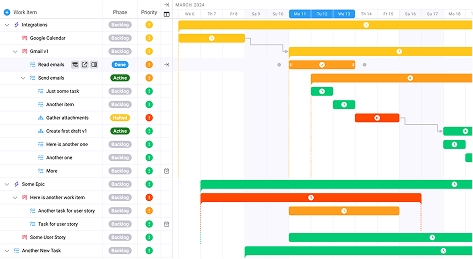
Maximizing Agency Profitability: The Complete Guide to Increasing Margins and Revenue
Key takeaways:
- Profit Margin Optimization: Learn how top-performing agencies achieve 45-50% gross margins through strategic pricing and operational excellence
- Revenue Growth Strategies: Discover the retention-focused approach that can boost profits by up to 75% through client lifetime value maximization
- Operational Efficiency: Master the utilization rate formulas and resource management techniques that directly impact your bottom line
- Data-Driven Decision Making: Implement the five critical metrics that separate profitable agencies from struggling ones
The agency landscape has never been more challenging for profitability. While 81% of marketing agency owners are banking on revenue expansion by 2025, the harsh reality is that the average profit margin for marketing agencies is around 15-20% in 2024. This narrow margin leaves little room for error and makes "Maximizing Agency Profitability" not just a goal, but a necessity for survival and growth in today's competitive market.
The difference between agencies that thrive and those that merely survive isn't luck—it's strategic execution of proven profitability frameworks. This comprehensive guide will equip you with the exact strategies, metrics, and systems needed to transform your agency from a "busy fool" operation into a highly profitable, sustainable business.
The Current Challenge - What's Broken in Agency Profitability
The agency industry faces a profitability crisis that goes far deeper than most owners realize. While 52.94% of surveyed agencies experienced profit growth of 5%-25% in the past 12 months, this modest growth often masks underlying structural problems that threaten long-term sustainability.
Consider the sobering reality: digital agencies have earned an average net margin of 15% since 2015, placing them in a precarious position where even minor market fluctuations can devastate cash flow. This narrow margin becomes even more problematic when compared to other professional services industries, where average operating profits for PR agencies was 16.6% in 2024 — indicating industry-wide pressure on profitability.
The root causes of poor agency profitability stem from three critical areas. First, pricing models that fail to capture true value delivery. Most agencies default to hourly billing or project-based pricing without considering the strategic impact of their work on client business outcomes. Second, operational inefficiencies that create hidden costs. Poor project management and resource allocation lead to scope creep, timeline overruns, and team burnout. Third, inadequate financial management systems that provide limited visibility into true project profitability and cash flow patterns.
The consequences extend beyond immediate cash flow problems. Agencies operating on thin margins struggle to invest in growth initiatives, retain top talent, or weather economic downturns. They become trapped in a cycle of reactive decision-making, constantly chasing new clients to replace revenue from departed ones, rather than building sustainable, profitable relationships.
The Strategic Framework - The PROFIT Method for Agency Success
To address these fundamental challenges, successful agencies implement what we call the PROFIT method—a comprehensive framework that systematically addresses each component of agency profitability:
P - Pricing Strategy Optimization: Moving beyond traditional hourly billing to value-based pricing models that align agency compensation with client results. This includes developing tiered service offerings and implementing strategic price increases based on demonstrated value delivery.
R - Resource Utilization Mastery: Achieving optimal balance between billable and non-billable activities through data-driven capacity planning and strategic resource allocation. Proper resource planning is fundamental to optimizing agency profitability.
O - Operational Excellence: Streamlining workflows, implementing robust project management systems, and eliminating inefficiencies that drain profitability. This includes automating routine tasks and establishing clear processes for scope management.
F - Financial Management: Implementing sophisticated financial tracking and reporting systems that provide real-time visibility into project profitability, cash flow patterns, and key performance indicators.
I - Investment in Growth: Strategic reinvestment of profits into capabilities, systems, and talent that drive long-term value creation rather than short-term cost cutting.
T - Technology Integration: Leveraging integrated platforms like Ravetree that combine project management, resource planning, time tracking, and billing functionality to eliminate operational silos and improve decision-making.
This framework recognizes that agency profitability isn't just about cutting costs—it's about systematically optimizing every aspect of operations to create sustainable competitive advantages. Strategic pricing approaches are essential for enhanced agency profitability, but they must be supported by operational excellence and sophisticated financial management.
Implementation Tactics - Five Specific Strategies for Immediate Impact
Strategy 1: Master Value-Based Pricing Architecture
The transition from hourly billing to value-based pricing represents the single most impactful change agencies can make to improve profitability. Agencies should aim for a 45-50% gross profit margin as a golden benchmark, which requires strategic pricing that captures the true value of your deliverables.
Successful value-based pricing starts with understanding client business outcomes. Instead of selling time, sell results. This means conducting thorough discovery sessions to quantify the financial impact of your services—whether that's increased lead generation, improved conversion rates, or enhanced brand awareness that drives revenue growth.
Implement a three-tiered pricing structure that provides clients with choice while anchoring higher price points. Your "good" option should be 25% below your preferred price point, your "better" option should be your target price, and your "best" option should be 40-50% above target. This psychological pricing technique makes your middle option appear more reasonable while providing upsell opportunities.
Build pricing flexibility into your service agreements through performance bonuses and success fees. When clients achieve specific milestones or exceed performance targets, your agency should share in that success through predetermined bonus structures. This approach aligns agency incentives with client outcomes while providing opportunities for premium compensation.
Strategy 2: Optimize Resource Utilization Through Data-Driven Planning
Utilization rate consistently ranks among the top 5 metrics tracked by agencies because it directly correlates with profitability. However, many agencies focus on the wrong utilization targets or fail to distinguish between productive and counterproductive utilization.
The optimal utilization rate varies by role and responsibility. Ideal utilization rates typically range between 70% to 80% for client-facing team members, while account managers and senior strategists should target 60-70% to allow time for business development and strategic planning activities.
Implement capacity forecasting that extends 90-120 days into the future. This requires maintaining detailed project pipelines that include probability-weighted revenue projections and resource requirements. By modeling different scenarios, you can make informed decisions about hiring, project acceptance, and resource allocation before capacity constraints impact profitability.
Use resource utilization data to identify skill gaps and training opportunities. When certain team members consistently operate at higher utilization rates than others with similar roles, investigate whether this reflects superior efficiency, better project allocation, or potentially unsustainable workloads that could lead to burnout.
Develop overflow capacity strategies that allow you to handle utilization spikes without compromising quality or team wellbeing. This might include partnerships with freelancers, subcontractor networks, or flexible staffing arrangements that can be activated when internal capacity reaches optimal levels.
Strategy 3: Implement Client Retention Systems That Drive Lifetime Value
The economics of client retention are compelling: a 5% increase in customer retention can boost profits by up to 75%. Yet many agencies invest disproportionately in new client acquisition while neglecting the systematic approach needed to maximize existing client relationships.
Mastering client retention strategies maximizes customer lifetime value through proactive relationship management and consistent value delivery. This starts with comprehensive onboarding processes that set clear expectations, establish communication protocols, and align on success metrics from day one.
Develop quarterly business reviews that go beyond campaign performance to address strategic objectives and industry trends. These sessions position your agency as a strategic partner rather than a vendor, creating opportunities to expand services and justify premium pricing. Use these reviews to identify expansion opportunities and address potential concerns before they become retention risks.
Implement early warning systems that identify at-risk client relationships before termination becomes likely. Key indicators include declining response rates to communications, reduced participation in strategic planning sessions, delayed payment patterns, or requests for detailed project reporting that suggest micromanagement concerns.
Create systematic upselling and cross-selling processes that introduce additional services based on client success patterns and expanding needs. The most successful agencies view client retention as revenue expansion, continuously identifying opportunities to increase service delivery and value creation within existing relationships.
Strategy 4: Establish Advanced Financial Management and Reporting Systems
Effective financial management drives sustainable agency growth through sophisticated tracking and analysis that enables data-driven decision making. This goes far beyond basic accounting to include project-level profitability analysis, cash flow forecasting, and predictive financial modeling.
Implement project profitability tracking that captures direct costs, allocated overhead, and opportunity costs for every client engagement. This requires granular time tracking and expense allocation systems that provide real-time visibility into project margins. Use this data to identify your most and least profitable service offerings, client types, and project structures.
Develop rolling 13-week cash flow forecasts that incorporate project pipelines, payment terms, and seasonal variations. This extended forecasting period allows you to identify potential cash flow constraints early enough to take corrective action through accelerated collections, adjusted payment terms, or strategic project timing.
Create management reporting dashboards that provide weekly updates on key performance indicators including utilization rates, project margins, accounts receivable aging, and pipeline conversion rates. These dashboards should be accessible to senior team members and updated automatically to ensure decision-making is based on current data.
Establish cost center accounting that allocates overhead expenses based on actual resource consumption rather than simple headcount ratios. This more sophisticated approach to cost allocation provides accurate project profitability data and helps identify areas where operational improvements can drive margin expansion.
Strategy 5: Build Technology Infrastructure That Scales Operations
Modern agency profitability depends on integrated technology platforms that eliminate manual processes, reduce errors, and provide comprehensive business intelligence. The goal is to create systems that scale efficiency as the agency grows rather than requiring proportional increases in administrative overhead.
Invest in comprehensive work management platforms that integrate project management, resource planning, time tracking, and billing functionality. Fragmented systems create data silos, manual reconciliation requirements, and operational inefficiencies that directly impact profitability. Look for platforms that provide native integration across all core business functions.
Implement automated reporting systems that generate client deliverables, internal performance reports, and financial summaries without manual intervention. Automation not only reduces administrative overhead but also ensures consistency and accuracy in client communications. This is particularly important for retainer-based relationships where regular reporting builds confidence and justifies ongoing investment.
Use business intelligence tools that provide predictive analytics and trend analysis to support strategic decision-making. These tools should integrate data from multiple sources to provide comprehensive insights into client behavior, project performance, team productivity, and financial trends.
Establish integration capabilities with client systems through APIs and automated data feeds. This level of integration positions your agency as an embedded partner rather than an external vendor, creating switching costs that improve retention while reducing manual reporting requirements.
Measuring Success - KPIs and Metrics That Matter
Successful agency profitability management requires systematic measurement of leading and lagging indicators that provide both historical performance data and predictive insights for future planning. The most successful agencies track five critical categories of metrics that provide comprehensive visibility into operational and financial performance.
Financial metrics form the foundation of profitability measurement. Gross profit margin should be calculated at both project and agency levels, with agencies with healthy processes and efficient operations can expect margins between 20-30% serving as a baseline benchmark. Track accounts receivable aging weekly to identify collection issues early, and monitor cash conversion cycles to optimize working capital management.
Operational efficiency metrics provide insights into resource utilization and process effectiveness. Beyond basic utilization rates, track project completion times against estimates, scope change frequency, and rework percentages. These metrics identify operational improvements that directly impact profitability by reducing waste and improving predictability.
Client relationship metrics focus on retention, expansion, and satisfaction indicators that drive long-term profitability. Monitor client lifetime value, retention rates by client segment, and revenue expansion within existing accounts. These metrics help identify which client relationships generate the highest returns and inform business development strategy.
Sales and pipeline metrics provide leading indicators of future profitability. Track proposal win rates by service type and client segment, average sales cycle length, and pipeline velocity. These metrics help optimize business development investments and improve forecasting accuracy.
Team performance metrics balance productivity with sustainability to ensure long-term operational excellence. Monitor individual and team utilization rates, but also track project satisfaction scores, overtime frequency, and team retention rates. High utilization achieved through unsustainable work practices will ultimately harm profitability through increased turnover and reduced quality.
Future Considerations - Emerging Trends and Next Steps
The agency landscape continues evolving rapidly, driven by technological advancement, changing client expectations, and economic pressures that demand increasingly sophisticated approaches to profitability management. Understanding these trends and preparing appropriate responses will determine which agencies thrive in the coming years.
Artificial intelligence and automation technologies are reshaping service delivery models and creating opportunities for margin expansion through increased efficiency. Agencies that successfully integrate AI tools into their workflows can reduce project delivery times, improve quality consistency, and handle larger client volumes without proportional increases in staff. However, this requires strategic investment in technology and team training that may impact short-term profitability while building long-term competitive advantages.
Client expectations for integrated service delivery and comprehensive business impact measurement continue rising. This trend favors agencies that can provide full-funnel attribution, advanced analytics, and consultative strategic planning rather than traditional execution-focused services. Adapting to these expectations requires investments in capabilities and systems that support more sophisticated service delivery models.
Economic uncertainty and budget pressures are driving clients toward performance-based pricing models and increased scrutiny of agency ROI. Agencies that can demonstrate clear business impact and align their compensation with client success will be positioned to capture premium pricing while those relying on traditional billing models may face continued margin pressure.
Remote and hybrid work models are creating new operational challenges and opportunities for cost optimization. While distributed teams can reduce overhead costs, they require sophisticated project management and communication systems to maintain efficiency and client service quality. Agencies that master remote operations may gain competitive advantages through reduced operational costs and access to broader talent pools.
The integration of comprehensive work management software platforms will become increasingly critical for agencies seeking to scale efficiently while maintaining profitability. These platforms provide the integrated functionality and business intelligence needed to optimize operations and make data-driven decisions in an increasingly complex business environment.
To position your agency for sustained profitability growth, begin implementing these frameworks systematically rather than attempting comprehensive changes simultaneously. Start with pricing strategy optimization and financial management systems, as these provide the foundation for all other improvements. Then progressively add operational efficiency improvements, technology integration, and advanced analytics capabilities.
Success in maximizing agency profitability requires commitment to systematic improvement and data-driven decision making. The agencies that will thrive are those that view profitability not as a single metric to optimize, but as the result of integrated excellence across all aspects of their operations. By implementing the strategies outlined in this guide, your agency can build the sustainable competitive advantages needed to achieve exceptional profitability in an increasingly challenging market.
As you embark on this transformation, remember that agency profitability is ultimately about creating value for clients while building a sustainable, profitable business that supports your team and serves your community. The frameworks and strategies presented here provide the roadmap—your commitment to implementation will determine the results.
Frequently Asked Questions
What is a good profit margin for a marketing agency?
A healthy profit margin for marketing agencies typically ranges between 15-20%, though top-performing agencies achieve 20-30% through operational excellence and strategic pricing. Gross profit margins should target 45-50% to ensure adequate contribution toward overhead and profit.
How can I increase my agency's utilization rate?
Focus on capacity planning, streamlined project management, and clear role definitions. Target 70-80% utilization for client-facing team members while maintaining 60-70% for managers to allow time for business development and strategic activities.
What pricing model generates the highest agency profits?
Value-based pricing consistently generates higher profits than hourly or project-based models because it aligns agency compensation with client outcomes. Implement tiered pricing structures with performance bonuses to maximize profitability.
How do I calculate project profitability accurately?
Track direct costs (labor, materials), allocated overhead, and opportunity costs for each project. Use comprehensive time tracking and expense allocation systems to ensure accurate cost capture and real-time profitability visibility.
What technology investments provide the best ROI for agency profitability?
Integrated work management platforms that combine project management, resource planning, time tracking, and billing provide the highest ROI by eliminating operational silos and reducing administrative overhead while improving decision-making capabilities.
How can client retention impact agency profitability?
A 5% increase in client retention can boost profits by up to 75% through reduced acquisition costs, higher lifetime values, and expansion opportunities within existing relationships. Focus on systematic retention programs and client success management.
What are the most important metrics to track for agency profitability?
Monitor gross profit margins by project and client, utilization rates by team member, client lifetime value, accounts receivable aging, and cash conversion cycles. These metrics provide comprehensive visibility into financial and operational performance.
How do I transition from hourly billing to value-based pricing?
Start by quantifying client business outcomes from your services, develop tiered pricing packages, and implement gradual price increases with existing clients while introducing value-based models for new client acquisitions.
What operational changes have the biggest impact on profitability?
Implement systematic project management processes, optimize resource allocation through capacity planning, automate routine administrative tasks, and establish clear scope management procedures to reduce waste and improve predictability.
How much should I invest in technology to improve profitability?
Technology investments should typically represent 3-5% of revenue and focus on integrated platforms that eliminate manual processes and provide business intelligence. Calculate ROI based on operational efficiency gains and improved decision-making capabilities.









